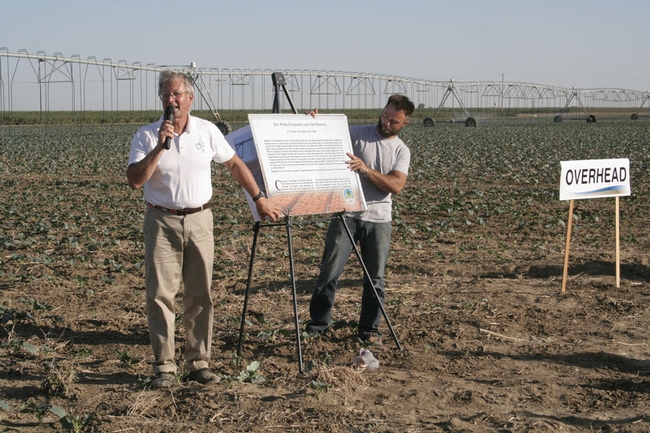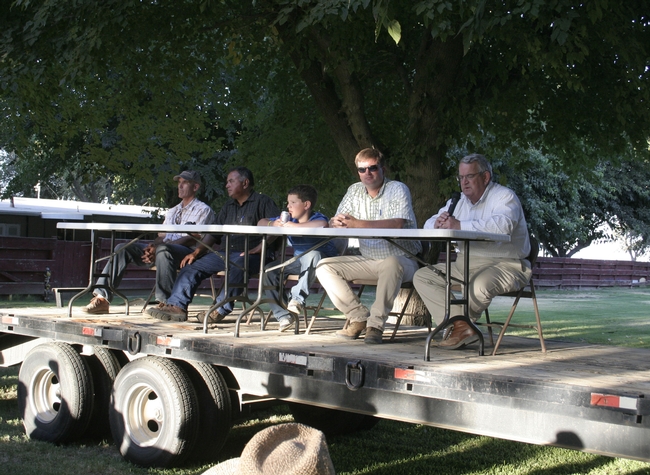UC scientists presented recent additions to the growing body of research on conservation tillage in California at the second annual Twilight Conservation Tillage and Cropping Systems field day last month, demonstrating progress in agricultural systems that will help farmers cut production costs, reduce soil disturbance and save water.
UC scientists and their partner farmers are conducting research that addresses the current needs of the San Joaquin Valley agricultural industry and research that is looking to the future by anticipating changes that may need to be negotiated in coming decades.
During the field day at UC's West Side Research and Extension Center in Five Points, Calif., participants visited two primary research areas. The first is the longest-standing conservation ag system study in California, where a cotton/tomato rotation has been farmed for 12 years running. The plots include standard tillage with and without cover crops and conservation tillage with and without cover crops.
“This might be the most-visited research field in California,” said Jeff Mitchell, UC Cooperative Extension vegetable crops specialist and chair of the CT workgroup. “Many students and scientists have conducted research here.”
For example, scientists have been able to quantify significant improvements in soil quality with the use of cover crops and conservation tillage. UC Davis soil biochemist Will Horwath reported that conservation tillage combined with an off-season cover crop has increased the soil carbon content close to five tons per hectare.
“Is that significant?” Horwath asks. “Yes. In 10 years, we have almost doubled the soil carbon content.”
Because of the valley’s dry, hot climate, the native soils are typically very low in carbon, which is a characteristic of low soil quality. Carbon in the soil acts as a glue, helping reduce wind erosion.

At the second research field, conservation tillage research is being combined with overhead and subsurface drip irrigation. Coupling overhead irrigation with conservation tillage is common in other regions of the U.S., but is just beginning to get attention in California.
“There are more than 17,000 center pivots in the state of Nebraska, and it is estimated that there are somewhere between 300 and 500 pivots currently in use in California, the No. 1 ag state in the nation,” Mitchell said. “This situation is changing rapidly.”
Overhead irrigation is efficient, automated, allows for diverse cropping and, with soil residues from conservation tillage, permits uniform infiltration.
Four users of overhead irrigation shared their experiences with the irrigation system at the field day. West side farmer John Deiner said mechanized irrigation has significantly reduced labor input in his agronomic crops while boosting crop yields.
“Our corn grew two to three feet taller under the pivot,” he said.
Will Taylor of King City grows potatoes for In and Out Burger under center pivots. He said his yields are 20 percent higher when using the overhead irrigation system.
“Once you overcome challenges,” Taylor said, “they’re awesome.”
He demonstrated their ease of use by bringing along his 9-year-old son Liam, whom he said can already manage the machine.
Darryl Cordova of Denair uses overhead irrigation in a hilly area on the east side of the valley.
“What used to take three guys six hours of moving pipe is now done with a push of a button on my cell phone,” Cordova said.
Scott Schmidt, who farms across the street from the West Side Research and Extension Center, said he has learned how to successfully use overhead irrigation and conservation tillage from the “school of hard knocks.”
“Most of the problems have been self-inflicted wounds,” Schmidt said. But now, he calls the system “flawless.” “We have seven pivots that I operate remotely from my phone.”
